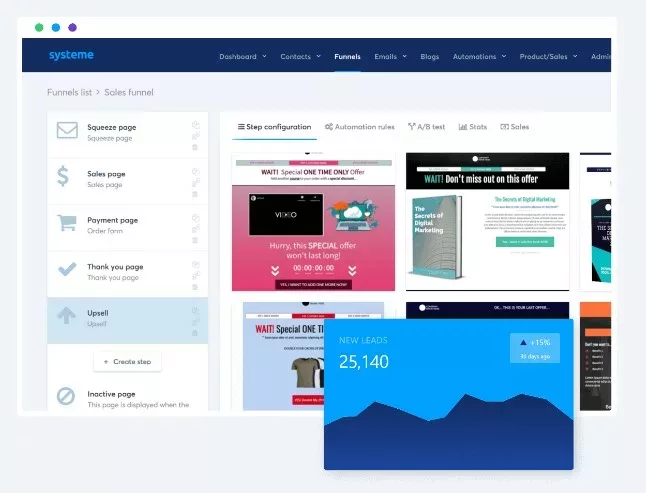In the dynamic realm of email marketing, one question stands out: What Is a Relationship Email? Understanding the significance of this specific email type can be a game-changer for your campaigns. Relationship emails have emerged as a crucial component of email marketing, designed to cultivate lasting connections between brands and their subscribers. In this comprehensive guide, we will delve deep into precisely what a relationship email is, why it is indispensable for email marketing success, and how you can optimize your email campaigns using this powerful tool.

1. Understanding What Is a Relationship Email
1.1 Defining Relationship Emails
In email marketing, relationship emails refer to a category of messages specifically designed to foster and strengthen the connection between a brand or organization and its subscribers or customers. Unlike promotional emails that primarily focus on selling products or services, relationship emails prioritize building rapport, trust, and loyalty with the audience.
1.2 The Evolution of Email Marketing
The history of email marketing can be traced back to the early days of the internet when businesses first realized the potential of reaching their target audience through email. Initially, email marketing campaigns were straightforward and often one-sided, featuring bulk messages sent to a vast list of recipients. However, as consumer expectations evolved, so did the need for more personalized and engaging email content.
1.3 Why Relationship Emails Matter
In today’s highly competitive digital landscape, consumers are bombarded with countless marketing messages daily. To stand out and make a lasting impact, brands must shift their focus from solely promoting products to nurturing genuine relationships with their audience. Relationship emails play a crucial role in achieving this goal.
Actionable tip: Begin by defining what relationship emails mean for your business and how they align with your overall email marketing strategy.
2. Types of Relationship Emails
To fully harness the power of relationship emails, it’s essential to understand the various types at your disposal. Here are some key categories:
2.1 Welcome Emails
Welcome emails are the first impression you make on new subscribers or customers. They set the tone for the relationship and are an opportunity to introduce your brand’s values, products, and services.
2.2 Engagement Emails
Engagement emails aim to keep your audience active and interested. They include newsletters, product updates, and educational content to provide ongoing value and maintain engagement.
2.3 Re-engagement Emails
Re-engagement emails target inactive subscribers. They’re designed to reignite interest and bring dormant contacts back into the fold.
2.4 Transactional Emails
Transactional emails, such as order confirmations, shipping notifications, and receipts, serve both a functional and relationship-building purpose. They reassure customers and provide opportunities to upsell or cross-sell.
2.5 Feedback and Survey Emails
Feedback and survey emails invite subscribers to share their opinions and experiences. They demonstrate that your brand values their input and can help you make improvements.
Actionable tip: Determine which types of relationship emails align with your business objectives and customer journey.

3. Benefits of Relationship Emails
Building a strong foundation of relationship emails in your email marketing strategy can yield a multitude of benefits for your brand:
3.1 Building Customer Loyalty
Relationship emails help nurture trust and loyalty among your audience. When customers feel a connection to your brand, they’re more likely to remain loyal and advocate for your products or services.
3.2 Increasing Engagement
Engagement metrics, such as open rates, click-through rates, and social shares, tend to improve with well-crafted relationship emails. Engaged subscribers are more likely to convert into customers.
3.3 Driving Sales
While relationship emails aren’t overtly promotional, they can indirectly boost sales by fostering trust and keeping your brand top-of-mind when subscribers are ready to make a purchase.
3.4 Enhancing Brand Reputation
Delivering valuable and relevant content through relationship emails establishes your brand as an industry authority, further enhancing your reputation.
Actionable tip: Clearly define the goals you aim to achieve with your relationship email campaigns and track these metrics regularly.
4. Creating Effective Relationship Emails
To create relationship emails that resonate with your audience, consider the following key elements:
4.1 Personalization
Personalization is at the heart of effective relationship emails. Use subscriber data to tailor content, subject lines, and recommendations to individual preferences and behaviors.
4.2 Segmentation
Segment your email list to send targeted messages to specific groups based on demographics, purchase history, or engagement levels. This ensures that subscribers receive content relevant to their interests.
4.3 Compelling Content
Create high-quality, valuable, and engaging content that speaks directly to your audience’s needs and pain points.
4.4 Call-to-Action (CTA)
Include clear and compelling CTAs that guide subscribers toward the desired action, whether it’s making a purchase, downloading an ebook, or sharing your content.
4.5 Mobile Optimization
Optimize your emails for mobile devices, as a significant portion of users accesses emails on smartphones and tablets. Ensure responsive design and concise, scannable content.
Actionable tip: Conduct regular content audits and A/B testing to refine and improve the effectiveness of your relationship emails.

Check out the article “Making Money Online 2023 – Unveiling the Pathways to Success”
5. Best Practices for Relationship Emails
To maximize the impact of your relationship emails, consider the following best practices:
5.1 Timing and Frequency
Determine the optimal times and frequencies for sending emails based on your audience’s preferences and behavior.
5.2 A/B Testing
Continuously test different elements of your emails, such as subject lines, content, and CTAs, to identify what resonates most with your audience.
5.3 Compliance with Regulations
Stay compliant with email marketing regulations, such as the CAN-SPAM Act or GDPR, to build trust and avoid legal issues.
5.4 Analytics and Metrics
Regularly analyze email performance metrics like open rates, click-through rates, conversion rates, and unsubscribe rates to gauge the effectiveness of your campaigns.
5.5 Feedback Loop
Encourage feedback from subscribers and use it to refine your email content and strategy continually.
Actionable tip: Create a content calendar and testing schedule to ensure consistency and ongoing optimization of your relationship email campaigns.
6. Examples of Successful Relationship Emails
Examining real-world examples can provide inspiration for your relationship email campaigns:
6.1 Amazon’s Personalized Recommendations
Amazon excels in sending personalized product recommendations based on a customer’s purchase history and browsing behavior, strengthening the customer-brand relationship.
6.2 Airbnb’s Booking Confirmation
Airbnb’s booking confirmation emails not only provide essential transactional information but also offer local tips and suggestions, enhancing the guest’s experience.
6.3 Spotify’s Weekly Playlist
Spotify’s personalized weekly playlists not only keep users engaged with the platform but also showcase the brand’s understanding of individual music preferences.
Actionable tip: Analyze successful relationship email campaigns from your industry and adapt their strategies to fit your brand.

7. Tools and Platforms for Relationship Email Marketing
Choosing the right tools and platforms is crucial for executing effective relationship email campaigns:
7.1 Email Marketing Software
Popular email marketing platforms like MailChimp, Constant Contact, and HubSpot offer robust features for creating and sending relationship emails.
7.2 CRM Systems
Customer Relationship Management (CRM) systems like Salesforce or HubSpot CRM can help you manage subscriber data and segment your audience effectively.
7.3 Automation Tools
Marketing automation platforms, such as Marketo or ActiveCampaign, enable you to set up automated relationship email workflows.
7.4 Analytics and Reporting Tools
Tools like Google Analytics and email marketing platform-specific analytics provide valuable insights into the performance of your relationship email campaigns.
Actionable tip: Invest in the right tools and platforms that align with your business needs and goals.
8. Challenges and Pitfalls
While relationship emails offer immense potential, they also come with challenges and potential pitfalls:
8.1 Spam Traps and Deliverability
Falling into spam traps or having low email deliverability can severely impact your relationship email campaigns. Ensure you maintain a clean and engaged email list.
8.2 Overpersonalization
Excessive personalization can come off as intrusive. Strike a balance between personalization and respecting subscribers’ privacy.
8.3 Neglecting Mobile Users
Failure to optimize emails for mobile can result in a poor user experience and lower engagement rates.
8.4 Ignoring Unsubscribers
Disregarding unsubscribers can harm your sender reputation. Implement an efficient unsubscribe process and consider exit surveys to gather feedback.
8.5 Legal Compliance
Failing to comply with email marketing regulations can lead to legal issues and damage your brand’s reputation.
Actionable tip: Stay vigilant and address these challenges proactively by regularly reviewing and updating your email marketing practices.
9. The Future of Relationship Emails
The landscape of email marketing is ever-evolving. Here’s a glimpse into what the future may hold for relationship emails:
9.1 Artificial Intelligence and Predictive Analytics
AI-driven personalization and predictive analytics will allow brands to deliver even more tailored and relevant content.
9.2 Integration with Social Media
Integration with social media platforms will enable seamless cross-channel engagement and customer interactions.
9.3 Enhanced Data Security
With increasing concerns about data privacy, brands will need to invest in robust data security measures to protect subscriber information.
9.4 Voice Assistants and IoT Devices
As voice-activated devices and IoT become more prevalent, optimizing relationship emails for these platforms will be crucial.
9.5 Sustainability and Eco-friendly Practices
Brands will need to consider eco-friendly email practices, such as reducing carbon emissions associated with email sending.
Actionable tip: Stay informed about emerging trends and technologies in email marketing to stay ahead of the curve.
10. Conclusion: Nurturing Connections through Relationship Emails
In the ever-evolving world of email marketing, relationship emails stand out as a powerful tool for building lasting connections with your audience. By understanding the different types of relationship emails, embracing best practices, and staying ahead of emerging trends, you can harness the full potential of this strategy to drive engagement, build loyalty, and ultimately achieve long-term success in your email marketing efforts.
As you embark on your journey of crafting relationship emails, remember that the key lies in authenticity and delivering real value to your subscribers. Cultivate trust, foster engagement, and watch your brand flourish in the inbox.
Start today, and nurture those relationships—one email at a time.



